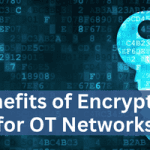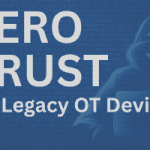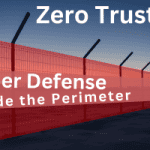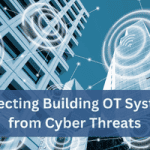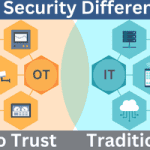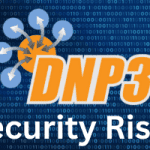Posts Tagged ‘OT Security’
Future-Proofing OT Cybersecurity
Key Points OT Cybersecurity Faces Unique Challenges: Operational technology networks are often outdated, lack operating systems, span wide geographies, and weren’t designed for connectivity—making them vulnerable and hard to secure. Existing IT-Based Solutions Fall Short: Current cybersecurity tools focus on monitoring and alerting rather than proactive protection, leading to alert fatigue and leaving OT…
Read MoreBenefits of Encryption for OT Networks
Key Points Why OT Needs Encryption Now: Historically air-gapped OT systems avoided encryption due to isolation, performance concerns, and device limitations, but modern connectivity and remote access have made unprotected communications a major cyber risk. Key Security Benefits: Encryption prevents unauthorized access, stops man-in-the-middle attacks, protects sensitive operational data, supports regulatory compliance, and maintains system…
Read MoreZero Trust Security for Microgrids and Energy Control Systems
Key Points Growing Cyber Risk in Microgrids: The distributed nature, two-way data flows, and device diversity in microgrids greatly expand the attack surface, making traditional perimeter-based security insufficient. Limitations of Legacy Security: Older “verify then trust” models lack device-level authentication/encryption, leaving systems vulnerable if an insider device is compromised and failing to protect at Purdue…
Read MoreZero Trust Security for Legacy OT Devices
Key Points Legacy OT Challenges: Many older OT systems use insecure protocols, lack modern security features, and have limited hardware resources—making them difficult to protect using traditional cybersecurity methods. Zero Trust Integration Options: Three primary methods exist—device replacement (costly), software-defined networking (limited protection), and security overlays (most effective and non-intrusive), with overlays offering encryption and…
Read MoreZero Trust: Reinforcing Security in Industrial Control Systems
As industrial control systems (ICS) become increasingly digitized, ensuring robust ICS security measures is paramount. In this article, we delve into the concept of Zero Trust and its potential to revolutionize the security landscape for industrial control systems. With cyber threats evolving in complexity and sophistication, traditional security measures are no longer sufficient. Zero Trust…
Read MoreZero Trust for OT Security: Cyber Defense Inside the Perimeter
Inside the Perimeter Defense is a Crucial Part of Defense in Depth for OT Security Firewalls for OT Security Perimeter Defense Firewalls are essential components of network security, acting as perimeter defenses that control incoming and outgoing network traffic based on predetermined security rules. However, they are not without their own set of potential security…
Read MoreProtecting Building OT Systems from Cyber Threats
Operational Technology (OT) systems in buildings, which include HVAC, lighting, access control, and other critical infrastructure, are increasingly becoming targets for cyber threats. The rise in attacks on these systems underscores the importance of robust cybersecurity measures to protect them. Here’s a look at how to safeguard building OT systems from cyber threats. Understanding the…
Read MoreKey Differences Between Zero Trust OT Security and Traditional IT Security
How is Zero Trust for OT Security Different from Traditional IT Security? Zero Trust for operational technology (OT) security differs significantly from traditional IT security models in several ways. Here are some key differences: Security Method Traditional IT Security Zero Trust OT Security Trust Model – Assumes that everything inside the network can be trusted.…
Read MoreImproving Cyber Physical Security
Introduction This is the podcast audio, highlights, and key insights from a Lunch and Learn session about the importance of improving cyber-physical security in building automation systems, highlighting the challenges and solutions in the industry. The event was hosted by KMC Controls. Podcast Audio – Improving Cyber-Physical Security Your browser does not support the audio…
Read MoreDNP3 Cybersecurity Risks: How to Protect ICS & SCADA Systems
DNP3 Cybersecurity Risks Quick Summary DNP3 is widely used in ICS and SCADA but faces significant security gaps, especially in legacy systems. Common threats include man-in-the-middle attacks, packet manipulation, and master impersonation. Legacy compatibility issues mean many systems still lack encryption and authentication. Mitigation requires strong authentication, encryption, integrity protection, and network segmentation. Zero Trust…
Read More

